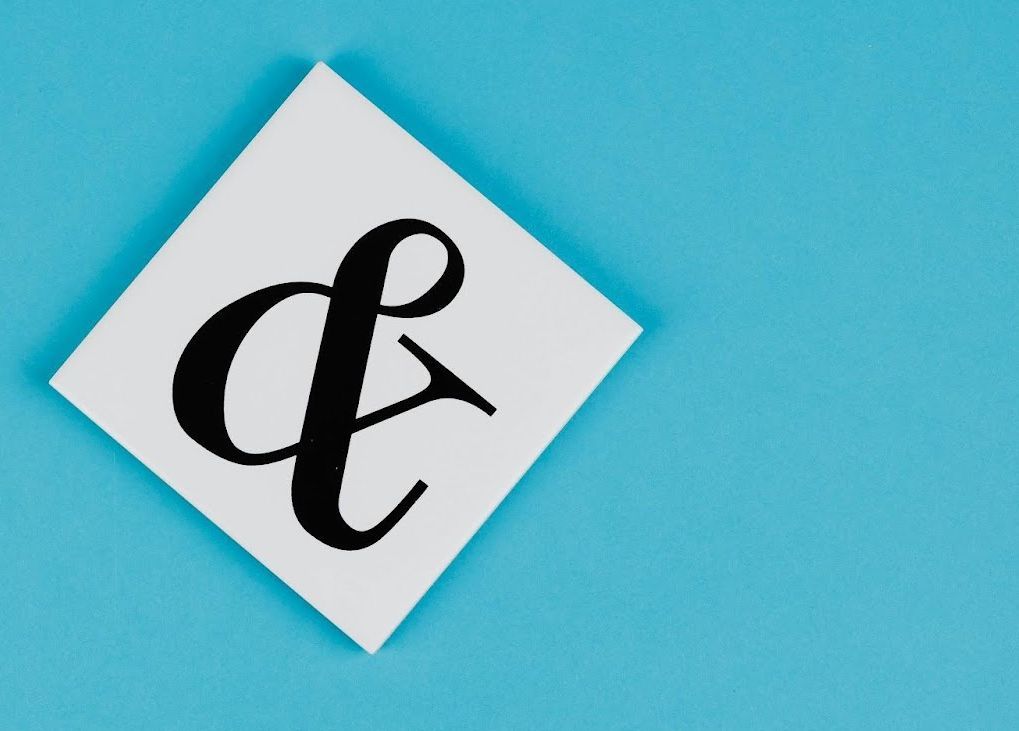From cave paintings to touch screens
Did you ever wonder why these 10 everyday symbols look the way they do?
Published on April 26, 2025
 Credit: Foundry
Credit: Foundry
Symbols are everywhere—from ancient manuscripts to Instagram captions. Elegant, cryptic, or quirky, certain typographic characters have communicated their meanings across mediums for centuries. The @ symbol, for example, appeared in merchant notes long before its use in email. And the asterisk has been catching eyes since ancient Greek scholars marked corrections with "little stars." In this article, we dive into the origins of these everyday symbols—you may never look at a question mark the same way again!
α (Alpha)
 Credit: Masood Aslami
Credit: Masood Aslami
We’ll start at the very beginning. Alpha, or α, is the first letter of the Greek alphabet, represented by a character similar to our lowercase "a." It traces back to the Phoenician letter aleph, which meant "ox." It was expressed with a shape that resembled the animal’s head: 𐤀.
So yes, we could say that our letter "A" is distantly derived from a drawing of a head. Because of its position at the start of the alphabet, the term alpha often refers to the first in a series—alpha particles, alpha software, and even alpha wolves are examples. It’s associated with leadership, hierarchy, and beginnings.
π (Pi)
 Credit: Taso Katsionis
Credit: Taso Katsionis
We know that pi (π) represents the ratio between the circumference and diameter of a circle, which is roughly 3.14. Because of this, Pi Day is celebrated on March 14th (3/14), often accompanied by mathematical discussions and, well, pies. But what’s the origin of the "T"-like symbol?
Simply put, π is the lowercase letter "p" in the Greek alphabet. In the 18th century, Welsh mathematician William Jones adopted it in place of the word perimeter, since it’s the first letter of that word in Greek (περίμετρος). Since then, the symbol has been used to represent the mathematical constant we know today.
@ (At)
 Credit: Covi
Credit: Covi
The "at" sign (@) has a wide array of names around the world. Some of them refer to its curious shape: in Italy, it’s called chiocciola (snail), and in Sweden, kanelbulle (cinnamon bun). Although we now see it daily in email addresses and on social media, its earliest documented use dates back to the 16th century, when merchants and scribes used it to mean "at the rate of" or "each"—for example: "5 apples @ $2."
In the 1970s, however, an American scientist used it to send the first email. The symbol came in handy for separating the user’s name from the machine or server name. Five decades later, not a day goes by without millions of people hitting that key to use the symbol.
& (Ampersand)
 Credit: Kaboompics.com
Credit: Kaboompics.com
We see it in titles (Law & Order), in company names (Ben & Jerry’s), and even in abbreviations (R&B). The ampersand symbol (&) is considered one of the oldest symbols still in regular use today. It originated as a ligature—a combination of the Latin letters E and T from the word et ("and").
In 1st-century Roman cursive, scribes began merging e and t for quicker writing; the "&" shape evolved over time, becoming more stylized during the Middle Ages. The name ampersand emerged in the 1800s, when, in early grammar schools, children reciting the alphabet would conclude with "&" (then considered the 27th letter) by saying: "and per se and" (meaning "and, by itself, means ‘and’"). Over time, this phrase slurred into ampersand.
# (Octothorpe)
 Credit: Image Hunter
Credit: Image Hunter
Some call it the "hash," the number sign, or the pound sign. Today, many know it as the "hashtag," owing to its use as a tagging device on social media. Its formal name, however, is the "octothorpe."
The octothorpe may have evolved from the Roman shorthand symbol ℔, which meant "pound in weight." Over time, it gained horizontal strokes, transforming into the # shape we recognize today. Since the 1960s, many people have known it as the "#" key on telephone keypads. In 2007, Twitter product designers adopted the symbol to group conversations—an idea that worked so well it soon spread across most social media platforms.
? (Question mark)
 Credit: Leeloo The First
Credit: Leeloo The First
In typographic terms, it’s called an "interrogation point." It marks a simple, direct question when placed at the end of a sentence, but we’ve also come to associate it with playful surprises or enigmas—like mystery boxes in games. But who decided that the dotted curl would stand for questions, though?
The question mark evolved from the Latin word quaestio ("question"). Early scribes abbreviated quaestio as "qo," placing the "o" above the "q." Over time, the "q" curved downward, and the "o" became the dot—forming the "?" we know today. By the 13th century, the modern question mark shape was widely adopted by European scholars. It became a standard punctuation mark with the rise of printing during the Renaissance.
! (Exclamation mark)
 Credit: Deden Dicky Ramdhani
Credit: Deden Dicky Ramdhani
So, what about the punctuation mark for exclamation? The exclamation mark has origins not too different from the question mark. In Latin, the word io (an exclamation of joy or triumph) was written with the "i" above the "o." Over time, scribes stylized this into "!", with the "i" becoming the vertical line and the "o" turning into the dot.
Still, it wasn’t until the 15th century that it became a standard symbol in writing. Before that, people relied on word choice or context to convey emphasis. Even today, some writers choose to avoid it. Style guides like The Chicago Manual of Style recommend using exclamation marks sparingly, arguing that "good writing" shouldn’t need them.
% (Percentage sign)
 Credit: Kaboompics.com
Credit: Kaboompics.com
The percentage sign, used to express a fraction out of a hundred, is another example of a symbol that evolved over the centuries into a scribble in itself. In Latin, per centum was used often, meaning "per hundred." When written down in early manuscripts, it was abbreviated as "pc" or "p100." Over time, the "p" disappeared, and the "100" was transformed into the two dots we recognize today.
Did you know that there is a similar sign meaning "per thousand"? The symbol "‰" (per mille) is a lesser-known cousin of the percentage sign and is still used in scientific and financial contexts.
(Asterisk)
 Credit: Kelly Sikkema
Credit: Kelly Sikkema
The "asterisk," as we know it today, was already drawn in cave paintings. Simple as it is, the figure must have always been compelling. The first time it was used to mark corrections or omissions in texts was by an early Greek scholar. They called this sign asteriskos, meaning "little star."
As early as the Middle Ages, it began being used around words or sentences to imply emphasis—similar to how we use it today in digital texts. In plain-text formats, we use the "" symbol to make specific words or letters appear bold.
$ (Dollar sign)
 Credit: Polina Tankilevitch
Credit: Polina Tankilevitch
The crossed-out "S" represents currency in the United States and many other countries, including Canada and Australia. In fact, the dollar sign originated from the symbol used in business correspondence to refer to the Spanish peso in the 18th century, also known in British America as "pieces of eight."
The peso was abbreviated as "ps" or "P$," representing "peso" and "silver." Over time, the "P" evolved, and scribes began merging it with the "S" into a single character. This stylization eventually led to the familiar "$," with one or two lines crossing the capital "S." The dollar sign became widely adopted in the United States after the country's independence.










